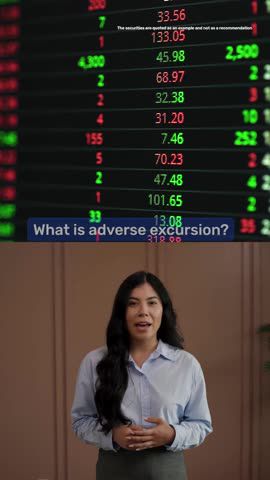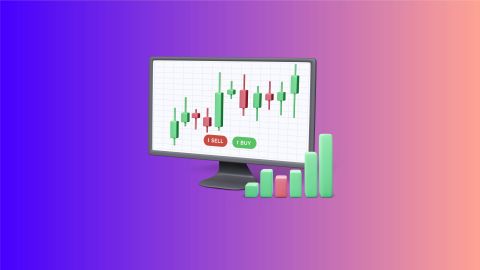Factors considered while calculating the India VIX
It is essential to note that the India VIX, or volatility index, is influenced by four key factors:
1. Expiry time
- The time remaining until the options contracts expire is crucial for accurate predictions.
- This time frame is calculated in minutes to ensure precision in forecasting market volatility.
2. Interest rate
- A risk-free interest rate is determined for NIFTY option contracts.
- This factor considers the prevailing tenure rates over the next 30–90 days.
- These rates depend on the contract's expiration month.
3. Forward index level
- This factor determines which out-of-the-money option contract should be utilised in the calculation.
- It sets the strike price for the options contract that reflects the current prices of NIFTY futures contracts for their respective expiry dates.
4. Bid-Ask Prices
- While calculating India VIX, both bid and ask prices for options contracts are considered.
- That’s because, mostly, NIFTY options can be bought at strike prices below the forward index levels.
- These prices are crucial inputs for assessing market volatility.
Furthermore, the India VIX calculation follows a methodology similar to that of the CBOE's VIX, with some adjustments to suit the NIFTY options market. It employs the Black-Scholes model, which is then modified to accommodate the specific characteristics of NIFTY options.
This model evaluates how various factors (including time and risk) impact the value of derivatives. While calculating India VIX is complex, you can use online India VIX calculators, which simplify this task.
How exactly is the India VIX calculated?
The India VIX is calculated using a complex mathematical model, the Black-Scholes (B&S) model, which is widely utilised for pricing financial derivatives, particularly options. This model considers several key variables to estimate the expected volatility of the Nifty 50 index over the next 30 days. Here is a more detailed explanation of how the India VIX is calculated:
1. Strike price (K)
The strike price represents the pre-determined price at which options on the Nifty 50 index are exercisable. In the context of the India VIX calculation, this value is determined based on the out-of-the-money call and put options of the Nifty 50 index.
2. Market price of the stock (S)
This variable denotes the current market price of the Nifty 50 index, and it is usually the latest available price.
3. Time to expiry (T)
Time to expiry refers to the remaining time until the options on the Nifty 50 index expire. For the India VIX, this period is generally set to 30 days, as the index aims to measure short-term volatility.
4. Risk-free rate (R)
The risk-free rate is the interest rate offered on risk-free investments, typically represented by government bonds. It serves as a benchmark for comparison, and in the context of the India VIX calculation, it is often the yield on the government bonds with a corresponding time to maturity (30 days).
5. Volatility (σ)
This is the most critical variable in the India VIX calculation. It represents the expected degree of price fluctuations in the Nifty 50 index over the next 30 days. Unlike the other variables, which can be directly observed, volatility is not known in advance. Instead, it is derived from the market prices of Nifty 50 index options.
How to use India VIX for trading - Volatility index India market applications
The India VIX has multiple applications for traders and investors, offering valuable insights and strategic advantages:
1. For long-term investors:
Long-term investors typically remain unaffected by short-term volatility. However, the VIX offers clarity about prevailing market trends and potential risks.
2. For institutional investors:
- Institutional investors with mark-to-market (MTM) loss limits use the VIX as a risk management tool.
- A rising VIX encourages hedging through instruments like put options, allowing them to safeguard portfolios.
3. For options traders:
- When volatility is expected to increase, options become more attractive, offering higher potential profits to buyers.
- Conversely, falling VIX values favour option sellers, as the time value of options decays more rapidly.
4. Trading volatility:
- Traders anticipating higher volatility can invest in straddles or strangles, though these strategies may become costly.
- Alternatively, trading VIX futures provides a more direct approach to profiting from increased volatility without being affected by market direction.
5. Correlation with NIFTY:
- Historical analysis reveals an inverse relationship between India VIX and NIFTY. Markets often peak when VIX is low and bottom when VIX is high, providing critical cues for index trading.
6. For portfolio managers:
- When VIX is high, portfolio managers can reduce exposure to high-beta stocks to minimise risk.
- Conversely, when VIX is low, they may increase exposure to high-beta stocks for higher returns.
The India VIX is an invaluable tool for understanding market sentiment, enabling precise trading strategies, and enhancing risk management across different investment horizons.
Planning trade around VIX
India VIX measures market volatility over the next 30 days. It calculates volatility using the current and next month's NIFTY options. While doing so, it assumes that the option premiums at different strike prices reflect the market's expected volatility.
Also, to provide an accurate assessment of market volatility, India VIX averages the order book of NIFTY. To do this, it uses complex formulas and techniques, but you are not required to learn them.
Instead, you should be aware of the practical usage of India VIX based on your trading style. Let’s understand this in detail:
Day traders:
- India VIX provides a gauge of market risk
- A rising VIX suggests increased market volatility
- Usually, this situation triggers stop losses
- Day traders must reduce leverage or adjust stop-loss levels during high volatility
Long-term investors
- For investors with a long-term horizon, short-term volatility is less relevant
- But a rising VIX always indicates growing market uncertainties
- It specifically highlights the market in which institutional investors hedge more by buying put options during high volatility periods
Options traders
- Traders must note that the value of an option is closely tied to volatility, where higher volatility makes options more valuable
- In such high-volatility situations, most traders use strategies like:
- Buying straddles
- Strangles
- However, these strategies can be expensive
- An alternative strategy is to trade futures on the VIX index. While following this strategy, you can ignore market direction
Furthermore, traders must understand that India VIX and NIFTY usually move in opposite directions. When the VIX is low, NIFTY tends to rise, and vice versa. This inverse relationship helps investors predict market behaviour.
Also, during high VIX values, most portfolio and mutual fund managers increase their exposure to high Beta stocks, which are more volatile. On the other hand, when VIX is low, they shift to low Beta stocks, which are less volatile.
VIX values also impact options writers. When the VIX values are high, they create a scenario of unlimited risk for limited rewards. That’s because, in periods of high volatility, out-of-the-money options quickly become:
- At-the-money
- In-the-money
To understand better, let’s see an example involving options writers:
- Say an options writer writes a contract of Rs. 275 for ABC stocks
- This stock is currently priced at Rs. 310
- The option writer plans to sell 3,000 shares at a premium of Rs. 10 on a seven-day expiry contract
- If market volatility drives the price down to Rs. 230 in two days, the writer incurs a loss of Rs. 35 per share.
- On the entire lot of 3,000 shares, the loss is Rs. 1,05,000
Hence, due to this potential loss, the writer of the option will ideally avoid writing the contract or demand a higher premium to compensate for the risk.
Significance of India VIX on the stock market
The India VIX serves as a valuable tool for understanding and managing market risk. It provides crucial insights for a variety of market participants:
- Intraday traders: The India VIX offers real-time information on market volatility, enabling traders to assess risk and adjust their strategies accordingly. During periods of heightened volatility, traders can make informed decisions regarding leverage, stop-loss levels, and position sizing.
- Long-term investors: While long-term investors may be less impacted by short-term fluctuations, they still face the risk of margin calls. By monitoring the India VIX, investors can better assess their exposure to market volatility and make informed decisions about their investment allocations.
- Options traders: The India VIX is a key factor in determining the pricing and attractiveness of options contracts. During periods of high volatility, option buyers may benefit from increased option premiums, while option sellers may prefer lower volatility environments.
- Mutual fund and portfolio managers: The India VIX can help fund managers allocate assets between high-beta and low-beta stocks. By understanding market volatility, managers can make more informed decisions about their portfolio construction and risk management.
How to interpret the rise and fall in VIX?
- Rising VIX
A rising VIX typically suggests increasing uncertainty and potentially falling stock prices. Traders may prepare for market corrections or reversals during such periods.
- Falling VIX
A falling VIX indicates decreasing perceived risk and higher confidence. It might be a favourable time for bullish strategies and capitalising on market upswings.
Volatility index India market applications
India VIX plays a crucial role for various types of market participants:
- Day traders:
It helps track short-term market swings and adjust strategies accordingly. Traders often use India VIX to manage stop-loss levels or fine-tune leverage during periods of heightened volatility.
- Long-term investors:
India VIX helps gauge market risk that may impact portfolio value through mark-to-market losses. It also supports better planning of fresh investments during uncertain times.
- Options traders:
When volatility is high, it typically benefits option buyers. Conversely, periods of low volatility tend to favour option sellers aiming for stable returns.
- Portfolio and mutual fund managers:
It assists in determining whether to tilt portfolios towards high-beta or low-beta stocks. Managers use VIX insights to allocate assets more effectively based on market sentiment and volatility.
How are India’s VIX and Nifty related?
Several investors and traders use the Volatility Index (VIX) to forecast market volatility. It is significant to mention that India VIX has shown a consistent inverse relationship with Nifty's performance over the past nine years.
It means that when the VIX is low, the Nifty tends to be at higher levels. This market situation indicates stability and investor confidence. On the other hand, when the VIX is high:
- The Nifty usually hits lower levels
- This indicates market instability or fear
Let’s understand this better through a real-life example.
- Before the COVID-19 pandemic, the India VIX generally stayed below 30 points.
- However, when the pandemic struck, fear about its impact on the economy caused a sharp rise in volatility.
- By March 27th, 2020, the India VIX surged to 70.39 points.
- Such a high reading reflects high market uncertainty and the expectation of a significant drop in stock prices.
Conclusion
Market volatility is an unavoidable component of investing and should be a factor in any portfolio. While volatility predominantly depends on the factors of demand and supply, when assets, securities, or financial instruments are high in demand and low in supply, price hikes are common. Conversely, when there is low demand and high supply, prices tend to fall.
Therefore, understanding market volatility and India VIX can help traders and investors make informed decisions about their investments.
Read our interested article





